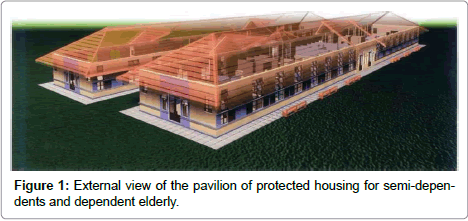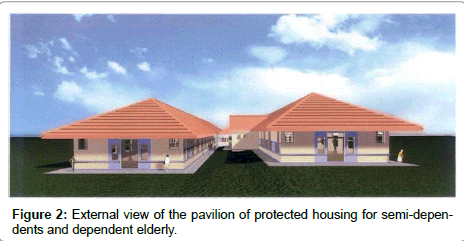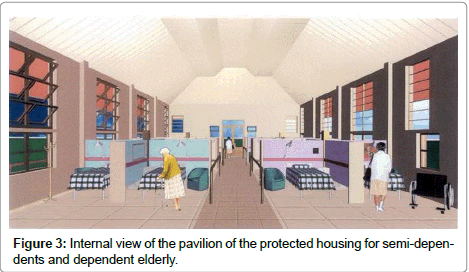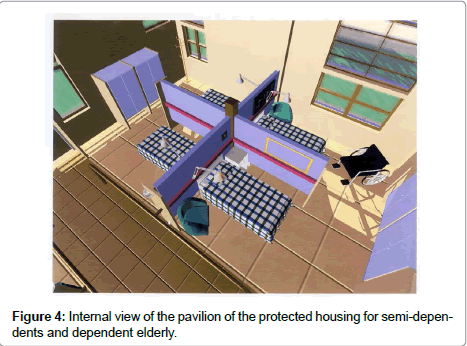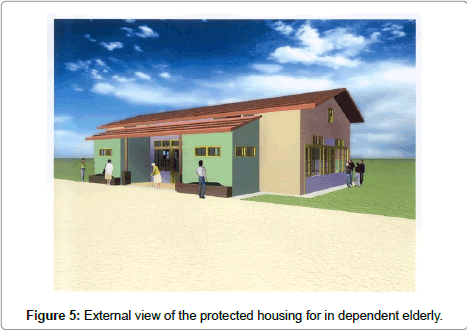Case Report Open Access
Improving Healthcare Quality to Elderly by Organizing of Attention Networks
Ferasso M1*, Pessôa LR2 and Ferla AA2
1Department of Nursing, Universidade Tecnologica Federal do Parana Curitiba, Brazil
2Department of Nursing, Federal University of Rio Grande do Sul, Brazil
- *Corresponding Author:
- Ferasso M, MSc
Universidade Tecnologica Federal do
Parana Curitiba, Brazil
E-mail: admmarcos@admmarcos.adm.br
Received date: January 17, 2015; Accepted date: February 17, 2015; Published date: February 20, 2015
Citation: Ferasso M, Pessôa LR, Ferla AA (2015) Improving Healthcare Quality to Elderly by Organizing of Attention Networks. J Community Med Health Educ 5:332. doi: 10.4172/2161-0711.1000332
Copyright: © 2015 Ferasso M, et al. This is an open-access article distributed under the terms of the Creative Commons Attribution License, which permits unrestricted use, distribution, and reproduction in any medium, provided the original author and source are credited.
Visit for more related articles at Journal of Community Medicine & Health Education
Abstract
In Brazil, the neoplasies took the second place in the period of 1996 to 2001. In relation to morbidity indicators, they express the emergence of chronic and degenerative diseases, caused by the fast aging of the population, an acute phenomenon explained more strongly by the reducing rates of infant mortality and the reduction in birth rates, presenting a situation for which the health systems are not prepared. In Brazil, it is confirmed a global tendency: the longer survival of women than men, and the depression as a major cause of morbidity. Brazilian society is going through intensive process of transformation, where young adults are increasingly fewer, imposing the question: who will take care of our elderly in the XXI century? The structuring of networks of attention to the elderly person is urgent, covering primary care, including the care with housing: Healthy Housing, and ensuring access to secondary and tertiary levels of care, providing early diagnosis and fast access to treatment. This article reports a case study experience: the restructuring of a shelter for elderly indigents, with 500 elderly in Rio de Janeiro, where it was held a broad process of humanization, with strong physical restructuring of the buildings from 1930.
Keywords
Community/Public health; Geriatric; Managed care; Evidence-based practice/guidelines; Quality improvement; Architecture healthcare
Introduction
The construction of health services networks or for other public policies is a challenge of enormous complexity, which involves a wide range of sizes ranging from the understanding of the population needs to be assisted, the definition of the network design (including several units, their different care profiles and functional articulation among them), up to the mechanisms of management, financing and evaluation of results. In the specific case of service networks for attention to the elderly in Brazil, the challenge is amplified by the contemporary context of population aging.
However, despite the efforts of the government spheres, the networks of care to elderly person have not been structured, becoming this an aggravating fact to the attention of this segment of society, as informs Professor Renato Peixoto Veras in an interview for O Globo Online [1].
The lack of intermediate institutions, such as centres and dayhospitals, the centres of coexistence in the residential (Flats), makes the first consultation to occur in an advanced stage already in the hospital, which not only increases the cost, but also decreases the chances of a favourable prognosis. In addition, the traditional medical approach, focused on a main complaint, and the habit of collecting medical complaints and signs in a single diagnosis can be tailored to the young adult, but not to the elderly.
It is important to highlight that this inadequacy of the health system in assisting elderly is not a privilege of the public sector; the private sector is also not prepared for an aging population [1].
This paper aims to add evidences to start thinking about public policies of attention to the elderly, in the context of social assistance and health attention, describing possibilities for reorganization of the service network from the analysis of examples such as Cristo Redentor Shelter (ACR), located in Rio de Janeiro.
Aging and Dependency
The term dependency, in a geriatrics practice, is closely related to the weakness, which is defined by Hazzard et al. (1994, as cited in Caldas [2]) as a vulnerability that the individual presents to the challenges of the environment itself. This condition is more commonly observed in people over 85 years old or in those younger ones who have a combination of disease or functional limitations that reduce their ability to adapt to the stress caused by acute illnesses, hospitalization or other high-risk situations [2].
The function is evaluated based on the capacity of implementation of the daily life activities, which in turn are divided and presented by Caldas [2].
A) Basic activities of daily life: self-tasks such as feeding, dressing, control the sphincters, bathe, and move up, among others.
B) Instrumental activities of daily life: indicatives of the ability to lead an independent life in the community such as carrying out domestic tasks, shopping, administrating their own medications, handling money, among others.
C) Advanced activities of daily life: a marker of more complex acts, and largely related to self-motivation such as work, leisure activities, social contacts, physical exercises, among others.
Aging in Brazil
In Brazil, the number of elderly (over or equal to 60 years) increased from 3 million in 1960 to 7 million in 1975 and 14 million in 2002 (an increase of 500% in forty years). The estimates indicate that it will reach 32 million in 2020 [3]. By 2050, it is estimated that there will be more elderly than children aged less than 18 and 15 years [4].
Research Method
This research uses the deductive approach through descriptive case study. The study is based on secondary and quantitative data, extracted from the databases of IBGE, from the Ministry of Health and from the existing records in the units studied and from qualitative data, according to the classification of Yin [5], with a focus on the health services management regarding the elderly of Cristo Redentor Shelter in Rio de Janeiro. All data were collected and selected according to the objective of this research, in constructing the case study by prioritizing the most important information for its construction.
Data Presentation and Discussion
The Cristo Redentor Shelter
The Cristo Redentor Shelter is a classic example of using the Hotel Dieu Pavillion Model for the implementation of a Shelter for the elderly in Brazil. This shelter is located in the district of Bonsucesso, Rio de Janeiro, occupying 173,000 m2, distributed in 13 pavilions, from which only 7 were activated at the time, while 3 were deactivated and the other 3 are totally destroyed. There are still about 20 houses intended for support activities.
In 1996, the Cristo Redentor Shelter was a unit from the Ministry of Welfare and Social Assistance (MPAS), previously managed by the extent Brazilian Assistance Legion. It is considered the largest shelter for the elderly in Brazil, and its clientele was composed by elderly who were not able to ensure their own survival.
Between August 1996 and May 1997, the shelter was directly managed by the State University of Rio de Janeiro, with the support of its Open University of the Third Age – UnATI, through an agreement with the MPAS. During this period, besides the daily activities of the Cristo Redentor Shelter, several initiatives were implemented aiming to improve the conditions of institutionalized care for the elderly, which also included a project to restructure the physical functional Asilar Complex.
Cristo Redentor Shelter physical-functional diagnosis: The physical-functional diagnosis was based on the following assumptions:
A) Analysis of the physical implantation of the complex facing the spatial demands in attendance to the Integrated Actions of Supporting the Elderly.
B) Analysis of the physical and functional architecture of the pavilions to the adequacy of Functional Programs.
C) Evaluation of infrastructure resources and maintenance systems which are available to the implementation of the physical-functional restructuring.
Establishment of the intervention proposal in the provision of services to the elderly
The director plan for the Cristo Redentor Shelter: The actions undertaken by ETGPO can be subdivided into two large blocks, the first concentrating the actions directed to the general proposal of intervention in the macro Complex, the Director Plan of the Cristo Redentor Shelter, and the second block of actions brings together the punctual interventions developed, the Architectural Projects designed.
Occupation plan: The proposed occupation plan sought to design an urban spatial structure, usual for a small town, flexible and organic, capable of breaking the existing architectural typology currently composed of rigid and closed spaces. The urbanity interventions proposed for the areas of leisure and coexistence, aim to redeem the references of citizenship and the elderly right to co-live in a community.
The road route preliminarily proposed, sought to tailor the original route to the new use, differentiating itself from the flow of pedestrians and cars, proposing a peripheral way surrounding the complex and allowing the movement of vehicles (taxis, ambulances and cars).
Activities sectorization: Based on the principles postulated by the occupation plan and zoning, the sectors of ACR Urban Complex will be identified and characterized.
Sector 1- Living Centre I
This sector adds the activities included in the programmes of the Living Centre. It aims at the shelter interaction with the surrounding community in order to carry out the following activities:
Cultural outdoor events at the Amphitheatre
Children’s park and areas of leisure
Cafeteria and restaurant services
Sector 2 - Living Centre II
This sector will be allocated to the activities of Occupational Therapy, Education, Leisure and Services. The pavilions in this sector include the space adequacy for the implementation of the following programs:
Section 3 - Creche and Entities
Located near the service entrance, this sector adds functions aiming to meet the external public, who keeps a relationship of coexistence with the shelter along the years.
Sector 4 - Sports area
This area aims to meet the Project IMMA - Elderly in Motion, Keeping Autonomy, elaborated by the team of UNATI/UERJ. The project aims to the practice of physical activities through the design of an “international park for physical activities and leisure” integrated with the Living Centre programmes, Health and protected housing.
Sector 5 - Housing - Protected housing
The architectural plan designed for this sector tried to reproduce an urban design which resembles a neighbourhood. The design of a square with six houses dispersed throughout this excerpt and the subsequent renovation of two near pavilions, aims to establish an area of transition between the institution and the city. The gradual integration of the elderly with the city occurs as a result of a visual communication redemption, common to a neighbourhood with pedestrians routes, urban signs and equipment (newsstand, mailboxes, laundries, among others), aiming at a training of these daily activities and self-care. Thus, the project tried to break the physical isolation to which the selfemployed elderly are submitted to.
Sector 6 - Hospital Support/Protected housing of Partial and Total Support/Administration
Sector 7 - Expansion area
Sector 8 - Maintenance and Staff Residence
Sector 9 - Green Reserve
Units of attention to health
Hospital Unit – on 50 beds for emergency medical
Ambulatory Care Unit: Criteria for Operation
Day Centre
The architectural projects – the question of humanization of the housing area: Next, the architectural projects are presented aiming at humanizing the homes of the semi-dependent and dependent elderly. Following figures (Figures 1-4) are the prototype for the ideal Architectural designing.
Working together with the Health teams, some products were developed to help the internal decoration, such as patchwork, pictures, photos of relatives and friends, paintings, etc. besides implementing some measures for humanization as you can see in Figures 5 and 6.
Cabinet: to keep belongings, and the development of aspects of territoriality.
Mirror: for the recognition and the process of self-esteem.
Clock: to rescue the notion of time.
Ruler of Facilities: for light vigil and plug, in case of emergency.
Its capacity is for 12 people, with living room, dining room, kitchen, three bathrooms and caretaker room. On the outside, there is service area with sink and washing machine.
Besides the implementation in the complex Cristo Redentor, this type of housing was also foreseen to be implemented in other districts of the city of Rio de Janeiro, which present a significant elderly population, and articulated with the Primary Health Care Units, such as Health Centres Medical Stations.
Conclusion and Recommendations
The discussion involving the consolidation of the space intended as housing for the clients of the ACR, can be regarded as the key process of this project. The necessity for integrating different views from each work team, involving a complete view of the elderly needs - social, cultural, health, psychological and spatial - means that this process is rich and dynamic.
It is undeniable that Brazil passes through a natural process of demographic transition. On the one hand, it is expressed by the fast aging of the population, an acute phenomenon explained by reducing rates of infant mortality and birth; and on the other hand, the tendency to decrease in terms of the number of young adults, causing an imbalance in the traditional form of organization of the Brazilian society.
The related case may be used as a starting point to the public policies toward elderly, structuring a network of attention in the context of Rio de Janeiro, and also to Brazil or other countries. We selected this proposal to be related as a case study, using qualitative description and secondary IBGE, data to demonstrate the urgency in thinking of public policies to a future of population that is getting aged and the need to assist poor families with a new proposal.
In the European Community, a similar alternative has been the installation of flats for the elderly and used in countries provided with sun and sea. This is a solution aimed at medium and high classes because services are consumed with expressive values. In Rio de Janeiro, an ancient hotel was remodelled on Copacabana beach under the same proposal, a flat for the elderly wealthy. But, what is about the elderly poor, often dependent on the Brazilian Health Unified System? How is the elderly in the middle-class? Who will take care of our elderly in the XXI century?
Acknowledgements
First Author thanks for the permission of using images from prof. Dr. Renato Peixoto Veras, Coordinator of Partnership MPAS/UERJ, and to his team of Architects of the Technical Office of Project Management and Works: (First author) (coord.), Ildary Mesquita Machado, Leonardo Jacques da Costa Braga, Marcelo Braga, Paulo Levier (in memoriam) Valéria Veras and Walter Teixeira Filho.
References
- O Globo Online (2006) Opiniao Interview with Veras, R.P.
- Caldas CP (2003) Envelhecimento com dependência: responsabilidades edemandas da família. Cad. Saúde Pública, 19(3).
- LimaCosta MF, Veras R (2003) Saúde pública e envelhecimento. Cad. SaúdePública, 19(3).
- Brasil (2006) Ministério da Saúde. Envelhecimento e saúde da pessoa idosa -Cadernos de Atenção Básica n. 19. Brasília: Ministério da Saúde.
- Yin R (2005) Estudo de caso: planejamento e métodos (3rdedn). Porto Alegre:Bookman.
Relevant Topics
- Addiction
- Adolescence
- Children Care
- Communicable Diseases
- Community Occupational Medicine
- Disorders and Treatments
- Education
- Infections
- Mental Health Education
- Mortality Rate
- Nutrition Education
- Occupational Therapy Education
- Population Health
- Prevalence
- Sexual Violence
- Social & Preventive Medicine
- Women's Healthcare
Recommended Journals
Article Tools
Article Usage
- Total views: 14010
- [From(publication date):
February-2015 - Nov 23, 2024] - Breakdown by view type
- HTML page views : 9636
- PDF downloads : 4374

